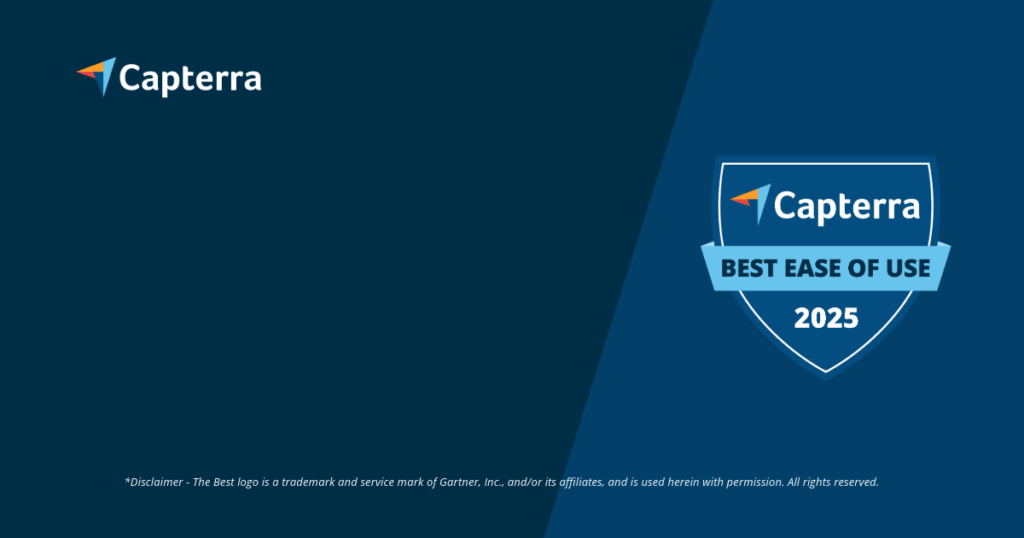Mobile Defect Management: How to Increase Efficiency and Legal Certainty in Your Construction Projects
We see it every day: The construction industry is changing, and digitalization plays a crucial role. One area that greatly benefits from these technological innovations is mobile defect management. Imagine capturing, documenting, and tracking defects directly on the construction site digitally—this completely turns traditional work methods on their heads. Say goodbye to time-consuming paperwork and confusing Excel lists! Modern mobile defect management enables you to handle processes transparently, efficiently, and legally securely. For us, this change is more than just a trend—it’s a necessity to survive in today’s competitive environment. We at Valoon support you in successfully navigating this transition and sustainably improving your communication and project management. Discover how you can elevate your projects with our expertise in defect management app to a new level. With us, you will find solutions tailored specifically to the needs of the construction industry, helping you save valuable time and costs.
It’s clear: The importance of mobile defect management in the modern construction industry is constantly growing. Given the rising quality demands and increasingly complex construction projects, seamless and traceable documentation is becoming more crucial. And that’s exactly what the Mobile Defect Management offers the ideal tools. By using smartphones and tablets, site managers, architects, and tradespeople can record defects directly on-site, supplement them with photos and notes, and immediately assign them to the responsible trades. This not only speeds up the entire defect resolution process but also minimizes the risk of misunderstandings and errors. When you integrate the digital defect capture for construction into your daily routines, it leads to a significant increase in efficiency and ensures higher satisfaction among all project participants. Find out now how to benefit from the advantages of mobile defect management and make your construction projects more successful.Mobile Defect Management: What’s Behind It? Goals and Legal Foundations Explained Simply
What is mobile defect management?
What exactly do we mean by mobile defect management? It is a systematic process that involves the identification, documentation, tracking, and rectification of construction defects using mobile devices like smartphones or tablets. At its core, we aim to digitally represent the entire lifecycle of a defect—from the initial detection on-site to the final acceptance of the correction. Unlike traditional methods that often rely on paper forms, sticky notes, or cumbersome Excel spreadsheets and are marked by inconvenient media breaks, modern app-based solutions for mobile defect management provide a fully digital and interconnected working method. These systems enable efficient communication among all participants and ensure seamless traceability, which is particularly important regarding warranty claims. Our defect management software at Valoon is specifically designed to simplify and optimize these processes.
- Systematic process for the identification, documentation, tracking, and rectification of construction defects.
- Use of mobile devices such as smartphones or tablets.
- Digital representation of the entire lifecycle of a defect.
- Consistently digital and interconnected working methods compared to traditional methods.
Goals of defect management
The goals of mobile defect management are diverse and significantly contribute to project success. At the top of the list is the early identification and rapid rectification of defects, to ensure the required construction quality and minimize costly rework or consequential damages. By digitally capturing and immediately forwarding defects, corrective actions can be initiated much more quickly. Furthermore, mobile defect management aims at optimizing internal processes by reducing manual activities and automating information flows. Improved, transparent communication between site management, specialized planners, executing companies, and the client is another important goal that leads to an increase in customer satisfaction . At the end of the day, an effective mobile defect management helps to complete projects on time and within budget.
Legal Foundations and Standards
For mobile defect management to be truly successful, a solid understanding of the legal framework is essential. Here in Germany, this mainly consists of the Civil Code (BGB), particularly § 633 BGB, which regulates the client’s right to a defect-free work, and the German Construction Tendering and Contract Regulations (VOB/B). Compliance with these regulations is crucial to minimize liability risks. The mobile defect management wirklich erfolgreich ist, braucht es ein solides Verständnis der rechtlichen Rahmenbedingungen. Hier in Deutschland sind das vor allem das Bürgerliche Gesetzbuch (BGB), insbesondere § 633 BGB, der das Recht des Bestellers auf ein mangelfreies Werk regelt, und die Vergabe- und Vertragsordnung für Bauleistungen (VOB/B). Die Einhaltung dieser Vorschriften ist entscheidend, um Haftungsrisiken zu minimieren. Von besonderer Bedeutung sind die defect correction deadlines, which can vary depending on the contractual basis (e.g., 4 years according to §13 VOB/B or 5 years according to § 633 BGB), are particularly important. Properly formulated and timely submitted notifications of defects are another important tool to limit one’s own liability, in case, for instance, requirements from the planner or prior work from other trades are defective. A good supplemental and defect management software according to VOB/B can provide valuable assistance here by helping to document all relevant information for this process in a revision-safe manner.The Benefits in Focus: How Mobile Defect Management Increases Your Efficiency and Minimizes Risks
Increase in efficiency and time savings
When you use mobile defect management , you will quickly notice a significant increase in efficiency and noticeable time savings in your construction projects. By digitally capturing defects directly on-site, the tedious double data entry—once handwritten on-site and later again in the office—is eliminated. Modern apps, like our solutions at Valoon, allow for photo capture, the addition of voice notes, and precise localization of defects on digital construction plans. This significantly reduces administrative overhead. This is not just theory: Studies and reports from our users, such as from users of the pro-Report app, show time savings of about two hours per week and project. This saved time can be used instead for quality assurance measures or the coordination of other important project tasks within mobile defect management. The automated report generation, for example for defect lists or daily reports, further contributes to efficiency.
- Significant increase in efficiency and notable time savings.
- Elimination of tedious double data entry.
- Modern apps enable photo capture, voice notes, and precise location on plans.
- Reduced administrative overhead and automated report generation.
Improved communication and collaboration
We see it repeatedly: Mobile Defect Management revolutionizes communication and collaboration among all project participants. Real-time notifications immediately inform responsible persons about newly recorded defects or status changes. This speeds up response times and ensures a continuous flow of information. The ability to assign tasks directly and transparently track their status enhances coordination among the trades. What makes our solution special? The seamless integration of popular messaging services like WhatsApp, Telegram, or MS Teams. This enables field workers to use familiar tools for the mobile defect management , which increases acceptance and reduces training effort. The central platform for the defect tracking app for construction ensures that all information is consolidated in one place, avoiding misunderstandings.
Seamless Documentation and Traceability
One of the greatest strengths of mobile defect management is clearly the creation of seamless and traceable construction documentation. Each defect is recorded with all relevant information such as photos, detailed descriptions, exact location on the construction plan, responsibilities, and deadlines. This data is stored centrally and securely for revision. Such comprehensive mobile construction documentation is invaluable—not only for internal quality control but also serves as a proof in case of disputes or when asserting warranty claims. The digital capture ensures that no information is lost and that the entire process from defect detection to rectification is documented transparently. This is a decisive advantage of mobile defect management over paper-based systems, which often generate gaps in documentation.
Minimization of Liability Risks
Through precise and timely documentation in mobile defect management, you can significantly minimize your liability risks. The ability to directly capture and send notifications of defects digitally is an important aspect here. For instance, when deviations from recognized rules of technology or defective prior work from other trades are identified, they can be documented and reported immediately, even before starting your own execution. This protects your company from unjustified claims. Compliance with legal requirements and standards, as outlined in the BGB and VOB/B, is supported by structured data capture and management within the mobile defect management system. Good photo documentation construction app is an integral part of capturing the condition before, during, and after defect rectification.Finding the Right App: What to Look for in Your Defect Management Solution
Functionality and User-Friendliness
When choosing an app for mobile defect management , you should primarily pay attention to two things: functionality and user-friendliness. The software should provide comprehensive capture and documentation capabilities, including the ability to take high-resolution photos and videos, the possibility to create voice notes as well as tools for detailed annotations directly on digital construction plans. An intuitive task assignment and tracking with clear status indicators (e.g., open, in progress, completed) is essential for a smooth workflow. Equally important is the ability to integrate with existing tools, such as BIM software (Building Information Modeling) for precise localization of defects or project management platforms for synchronizing schedules and resources. A simple, clear menu navigation and an appealing design significantly contribute to user acceptance of the digital solution. We at Valoon place the highest value on ensuring that our construction site app combines these aspects.
- Comprehensive capture and documentation capabilities (high-resolution photos/videos, voice notes, annotations on plans).
- Intuitive task assignment and tracking with clear status indicators.
- Ability to integrate with existing tools like BIM software and project management platforms.
- Simple, clear menu navigation and appealing design for high user acceptance.
Technical Aspects
But it’s not just the features that matter—the technology also needs to be right for a mobile defect management successful use of the app. A reliable offline functionality is essential since construction sites often lack or have limited internet connectivity. The captured data must be securely stored and automatically synchronized as soon as a connection is re-established. Data security and privacy, especially compliance with the General Data Protection Regulation (GDPR) Konformität mit der Datenschutz-Grundverordnung (DSGVO), must be ensured, as sensitive project data is processed. Take a close look: Are encryption technologies in use, and where are the servers located? The availability of application programming interfaces (APIs) is another important point, as it allows the connection of the defect management software to other systems used in the company (e.g. ERP software, document management systems) and thus avoids data silos.
Costs and scalability
Of course, the cost structure and scalability of a mobile defect management solution also play a role. The solution must easily fit the needs and size of your company. Our tip: Compare the value for money of various providers. Consider not only the license costs but also possible fees for training, support, or additional modules. There are both free apps that may be suitable for very small projects or occasional use, as well as extensive, paid enterprise solutions. Free apps may be fine for starters but often hit their limits with complex projects, legal documentation requirements, or the need for integrations. Ensure that the chosen software for defect recording is scalable and can grow with your project requirements, without the need for a complete system change. Transparent pricing without hidden costs is beneficial in this regard.
User involvement and testing phases
To be honest: The best mobile defect management app is useless if your employees do not accept and use it. Therefore, the early involvement of end users – that is, the site managers, foremen, and tradespeople who are supposed to use it daily – in the selection process is crucial. Our advice: Start test phases with a selection of different apps and collect feedback from your employees. If necessary, create a weighted criteria catalog to objectively compare the different solutions. Consider specific requirements of your projects and workflows. Software that is perceived by users as helpful and easy to use has a significantly higher chance of successful implementation and sustainable use. Many providers, including us at Valoon, offer free trials or demos to allow you to thoroughly test the software. mobile defect management, die von den Nutzern als hilfreich und einfach zu bedienen empfunden wird, hat eine deutlich höhere Chance auf erfolgreiche Implementierung und nachhaltige Nutzung. Viele Anbieter, auch wir bei Valoon, bieten Ihnen kostenlose Testversionen oder Demos an, um die Software ausgiebig zu prüfen.What modern defect apps must be able to do: Core functionalities for your superior construction site management
Mobile data collection and processing
What characterizes modern apps for mobile defect management ? Clearly, highly developed mobile data collection and processing. Defects are recorded digitally on-site through intuitive interfaces on smartphones or tablets. A special highlight that we offer at Valoon is the recording via popular messaging services like WhatsApp. Field employees can report defects in their familiar environment, send photos, and dictate information. This initially unstructured data is then automatically analyzed, structured, and converted into usable project data by our platform. mobile defect management This significantly lowers the entry barrier for digitalization and ensures that all relevant information can be captured and further processed without media interruptions. The digital defect capture for construction is made as easy as sending a message.
Central task management and workflow automation
The heart of a powerful mobile defect management system is central task management, complemented by intelligent workflow automation. Once a defect is recorded, notifications can automatically be sent to the relevant trades or employees. The assignment of tasks, setting deadlines, and monitoring processing status are done transparently and understandably. With modern apps, you can even define escalation procedures, if deadlines are not met. Additionally, many systems offer the ability to create customizable checklists and workflows that are specifically tailored to the requirements of individual projects or companies. This ensures that standardized processes in defect recording on-site are adhered to and that the quality of defect processing improves. Automating recurring tasks relieves project management and creates space for other important activities.
Intelligent reporting and analytics
Another decisive advantage of modern mobile defect management apps: intelligent reporting and the ability to analyze data. Imagine: generating professional reports at the touch of a button, whether detailed defect lists, photo documentation, measurement logs, or daily construction reports. These reports can be customized and exported in various formats (e.g. PDF, Excel). The collected data also form the basis for meaningful analyses. Through a database-oriented evaluation of the recorded defects, for example, frequently occurring sources of errors can be identified, the performance of subcontractors assessed, or weaknesses in building components recognized. These insights from digital defect recording are valuable for continuous quality improvement and for optimizing future construction projects. Our Valoon platform provides you with powerful analysis tools.
Integration of BIM and other systems
A truly future-proof mobile defect management solution is recognized by its ability to integrate well with other systems, especially with Building Information Modeling (BIM). BIM integration enables a precise localization of defects directly in the 3D model of the building. This significantly eases locating the defect at the construction site and avoids misunderstandings. Through so-called BIM markers, defect information can be directly linked to the corresponding components in the model. In addition to BIM, connecting to other project management tools, ERP systems, or document management solutions via APIs (application programming interfaces) is of great importance. This ensures a seamless data flow between different applications, avoids redundant data entries, and ensures that all project participants always have access to current information. We see such an integrated approach as an essential building block for the future of construction.Successfully start: How to implement mobile defect management step by step
Step-by-step guide
If you want to successfully implement software for mobile defect management , this usually occurs in three core phases. First, the download and setup of the app on the mobile devices of the employees as well as the configuration of the associated web application for the office staff. This includes setting up projects, users, and possibly customizing templates or checklists. The second phase is the mobile recording of defects directly on the construction site. Employees use the app to document defects with photos, descriptions, and precise localization and assign them to the responsible persons. The third phase includes the export of defect lists and the continuous monitoring of the remediation progress. Through a ticket system or dashboard in the defect software, the status of each defect is tracked until it is successfully resolved and accepted. Our tip: An intuitive software that even colleagues without technical affinity can easily use is worth its weight in gold.
Change management and training
Don’t forget: The introduction of new software for mobile defect management is not just a technical issue, but primarily a change for your organization and your employees. Therefore, thoughtful change management is essential to ensure acceptance among employees. Talk openly about the benefits of the new solution, such as time savings, improved collaboration, and reduced errors. Involve future users early in the selection and implementation process. Plan sufficient time for training , so that all employees can learn to use the new app safely. Offer different training formats (e.g., face-to-face training, online tutorials, manuals) and designate key users who can serve as the first points of contact for questions. A little resistance to change is completely normal but can be minimized through open communication and showcasing concrete improvements in everyday work.
Best practices and case studies
Why reinvent the wheel? Take a look at how other companies mobile defect management have implemented it by studying best practices and case studies. Successful projects often stand out by having clear goals defined for software implementation and by transparently demonstrating the benefits for all stakeholders. A staggered introduction, starting with pilot projects, can help identify teething problems and optimally adapt the software to your own needs. What we have learned from many projects: Good preparation and the involvement of all stakeholders are essential. Ensure that the chosen sind das A und O. Achten Sie darauf, dass die gewählte mobile defect management solution is flexible enough to adapt to your specific processes, not the other way around. We at Valoon are happy to share our experiences with you and help you develop a tailored implementation strategy for your digital defect management .
Key benefits of mobile defect management
Here are some of the key benefits you can achieve through the use of mobile defect management:
- Time savings: You significantly reduce administrative effort through digital recording and automated processes, which can save up to two hours per project per week, according to studies.
- Cost reduction: You minimize costly rework and consequential damages through early defect detection and rapid remediation, which positively impacts your project budget.
- Quality enhancement: You ensure higher construction quality through comprehensive documentation, transparent defect tracking, and consistent handling of all identified deficiencies.
- Legal certainty: You have more evidence security in case of disputes through tamper-proof storage of all data and compliance with legal documentation requirements, which minimizes your liability risks.
- Improved collaboration: The flow of information is optimized, and the coordination of all project participants becomes more efficient through real-time communication and centralized data storage.
Overcoming hurdles: How to master the introduction of mobile defect management
Technical hurdles
Certainly, technical hurdles can arise during the implementation of mobile defect management. A common challenge is the integration of the new software into existing IT systems of the company, such as ERP software, accounting programs, or specialized industry solutions. Here, open interfaces (APIs) of the defect management app are crucial to ensure smooth data exchange and avoid data silos. Another important aspect is the ensuring data security and data protection, especially when processing sensitive project data and personal information. It must be ensured that the chosen solution is GDPR compliant and has robust security mechanisms to protect data from unauthorized access or loss. At Valoon, we place the highest value on the security of your data and offer solutions that meet the highest standards in the field of mobile defect management .
Organizational challenges
But it’s not just the technology that can be challenging; often, it is also organizational aspects that influence the success of implementing mobile defect management. Employees are often initially skeptical of new things (resistance to change), we know that – it’s human. Many are accustomed to established, albeit inefficient, work practices and are reluctant to invest the effort needed to familiarize themselves with new systems. A lack of acceptance can undermine the use of the software and negate its benefits. To counteract this, it helps immensely, to proactively communicate the benefits and to involve employees in the selection and implementation process of mobile defect management. Training and continuous support are also important to reduce apprehension and empower users to leverage the full potential of the software. A clear definition of responsibilities and processes in dealing with the new system is also a crucial success factor.
Costs and ROI
Of course, investing in software comes with costs that can go beyond just licensing fees. Possible expenditures for new hardware (e.g., tablets for the construction site), employee training, and any necessary software adjustments to meet specific corporate needs should also be considered. Therefore, careful planning and budgeting are essential. However, this is balanced by the return on investment (ROI) that can be achieved through the use of mobile defect management. This manifests itself in mobile defect management mit Kosten verbunden, die über die reinen Lizenzgebühren hinausgehen können. Zu berücksichtigen sind auch mögliche Ausgaben für neue Hardware (z.B. Tablets für die Baustelle), Schulungen der Mitarbeiter und gegebenenfalls Anpassungen der Software an spezifische Unternehmensbedürfnisse. Eine sorgfältige Planung und Budgetierung ist daher unerlässlich. Aber dem gegenüber steht der Return on Investment (ROI), der durch die Nutzung von mobilem Mängelmanagement erzielt werden kann. Dieser manifestiert sich in time savings, reduced costs for rework, avoided penalties, and improved construction quality.. To make ROI measurable, clear key performance indicators (KPIs) should be defined before implementation to evaluate success. Examples include the average processing time of defects, the number of defects per project, or the costs of defect resolution. When you make these benefits transparent, justifying the investment in mobile defect management becomes easy.Looking ahead: These innovations in mobile defect management are transforming the construction industry
Artificial Intelligence and Automation
When we look to the future of mobile defect management, we clearly see the impact of advancements in artificial intelligence (AI) and automation. AI-powered systems could, for instance, learn to automatically recognize and classify defects based on photos or videos. This would further reduce reporting time and increase accuracy. Imagine an automated prioritization of defects based on their severity, potential impact, or contractual deadlines. Algorithms could identify patterns in the recorded defect data and suggest preventive measures to avoid similar mistakes in future projects. The automation of routine tasks in mobile defect management, such as assigning responsibilities or generating standard reports, will continue to increase and relieve project teams. At Valoon, we are closely monitoring these developments to always provide you with innovative solutions.
Building Information Modeling (BIM)
The connection between mobile defect management and Building Information Modeling (BIM) processes will also become increasingly close and improved. BIM provides a digital representation of the physical and functional characteristics of a structure and serves as a central source of information for all project stakeholders. By linking defect data with the BIM model, defects can not only be precisely located in 3D space but also directly assigned to the affected components. This enables an improved coordination of defect resolution and a more transparent communication. Future developments may allow defect information to be visualized directly in the BIM model and the progress of remediation to be tracked in real-time. Utilizing BIM in mobile defect management will help us build even more efficiently and with higher quality – this is a crucial part of defect management app the future.
Cloud-Based Solutions
There’s no doubt: Cloud-based platforms will continue to set the benchmark for mobile defect management. They offer high flexibility and scalability, as companies only use the resources they actually need, and the systems can easily be adapted to growing project volumes or employee numbers. Access to project data is possible from anywhere and with various devices, facilitating collaboration between office and construction site significantly. Cloud solutions also enable rapid updates and implementation of new features, without the need for complex installations on local servers. Data backup and recovery is typically handled by the provider, relieving the IT departments of construction companies. That’s why we at Valoon rely on a cloud-based SaaS platform to provide you with a powerful and always up-to-date tool for your mobile defect management .Our Conclusion: Mobile defect management – your key to successful and future-proof construction projects
We are clear: mobile defect management has established itself as an indispensable tool in modern construction. The benefits – from significant time savings and cost reductions to improved communication and comprehensive documentation, as well as minimizing liability risks – are simply convincing. The transition from traditional, often error-prone methods to digital, app-based solutions for mobile defect management is no longer seen as an option but as a clear necessity to remain competitive and meet the increasing demands for quality and efficiency. Certainly, the implementation can have its challenges, such as technical hurdles or the need for change management, but the long-term positive effects far outweigh the downsides. Continuous development, driven by innovations such as AI, BIM integration, and cloud technologies, promises even more powerful and intelligent support for the mobile defect management the future.
We at Valoon are here as a competent partner to help you fully leverage the potential of mobile defect management. Our cloud-based SaaS platform is designed to simplify data collection and processing and sustainably improve the flow of information between field staff and the office. With features like integration of common messaging services, automatic translations, and a strong focus on user-friendliness, we lower the entry barriers for digitalization. Our advice: Invest in the future of your construction projects and optimize your mobile defect management with a solution that focuses on simplicity and efficiency. Discover how you can streamline your processes and make your projects more successful. Just reach out to us – we are happy to provide personalized advice and show you how we can support you. Request your free demo now and take the first step towards a much more efficient defect management.
What exactly is mobile defect management and how does it differ from our previous working methods?
Mobile defect management is a digital process for recording, documenting, tracking, and resolving construction defects directly on the construction site using a smartphone or tablet. Unlike traditional paper systems or confusing Excel spreadsheets, which often lead to media discontinuities and information loss, it allows for a streamlined, efficient, and transparent workflow.
What specific advantages does using a mobile defect management app bring to our daily construction operations?
The use of a mobile defect management app offers significant time savings (e.g., up to two hours per week per project), an improved communication through real-time notifications, a comprehensive and well-documented record of all defects, as well as a Minimization of Liability Risks by complying with legal requirements.
Is the implementation of such software complicated and how can we get our employees to use it?
Modern defect management apps, like those from Valoon, are designed for simplicity and user-friendliness. The implementation is facilitated through intuitive interfaces and the integration of familiar tools like WhatsApp. Important are good training and communication of the benefits to promote the acceptance within the team..
How does mobile defect management help us minimize legal risks and comply with VOB/B?
Mobile defect management supports you through a precise and timely documentation of all processes, including photo documentation and accurate localization. This is crucial for the preservation of evidence in case of disputes and helps in complying with standards like § 633 BGB and VOB/B, for instance in creating notices of defects or in meeting deadlines for defect remedies..
Can our employees also report defects on the construction site without an internet connection?
Yes, many professional defect management apps offer a reliable offline functionality. Defects can also be recorded and saved without an active internet connection. Once a connection is reestablished, the data is automatically synchronized..
Our employees already use WhatsApp. Can a defect management app be integrated with it?
Yes, innovative solutions like those from Valoon enable a seamless integration of common messaging services, especially WhatsApp.Field staff can report defects directly via WhatsApp, which facilitates the onboarding process and increases acceptance since they can use familiar tools.
What does a defect management app cost and which solution is right for us?
Costs vary depending on the scope of features and provider. There are free basic apps that may be suitable for small projects, and comprehensive paid solutions for professional needs.An important consideration is good value for money and that the software is scalable and fits your specific project requirements.. Many providers offer trial versions.
How can we concretely save costs with a mobile defect management app?
By using mobile defect management, you significantly reduce administrative effort, minimize costly rework through early detection and resolution of errors, and avoid potential contractual penalties by adhering to schedules and quality standards. Increased efficiency directly leads to lower personnel costs per defect..








